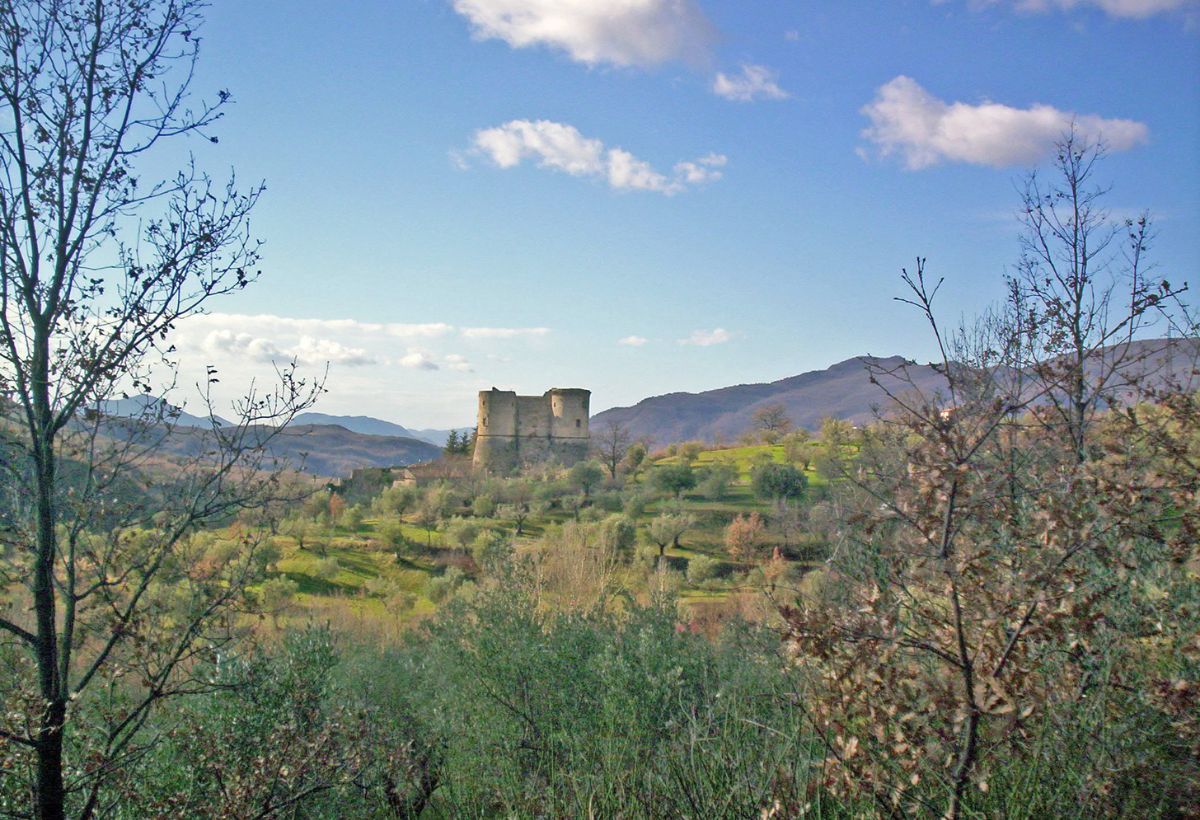Prata Sannita is an ancient and fascinating village in Campania, specifically located in the province of Caserta. It develops in the hills, 333 meters above sea level. It is in the Media Valle del Volturno, located on the southern slope of the Matese. There are two residential areas present and have different origins. Lower Prata it is medieval, with an imposing castle and a fortification. Upper Prata instead it is more recent and is located on a plateau, dominating the plain from above.
The name has Latin origin, from Prata-orum. The addition of Sannita dates back to 1862. The name of the village appears for the first time in 958 in the Chronicon, a document found in the monastery of San Vincenzo al Volturno.
Let's discover Prata Sannita
Prata Sannita is within the Matese regional park. The village is perched around the castle, resting on a ridge that it overlooks the valley crossed by the river Lethe. The town is surrounded by walls, with ancient towers that have survived to this day.
In order to adapt to the conformation of the territory, the houses were developed in the distant past one against the other. At the same time, this served to achieve a better defense against external attacks. Among the many low structures stand out the "tower houses", taller and a symbol of the power of the richest families.
As mentioned, even today the entire complex is enclosed by walls. The first is from the Lombard period and has four access doors, with valleys regulated by cylindrical towers. At one time the village was connected to the neighboring villages thanks to the bridge over the Lete river, dating back to the Roman era, made in the shape of a donkey's back. Remained intact to this day.
Get inspired
There are many historical elements to admire in the village. There is the already mentioned bridge medieval, located outside the walls. It was probably built on an older Roman bridge, crossed by a personal path, with non-square stones.
To visit the Castle Pando. The original plant dates back to the year XNUMX. The current appearance is instead fourteenth-century, typical of Angevin architecture. During the XNUMXth century the village was born as a real fortified agglomeration. We continued with the construction of the walls and towers for greater safety. At the same time, then, the Lombard lords built the first nucleus of the castle, enlarged and renovated in the fourteenth century, under the dynasty of the Pandone counts.
Inside we find the historical museum of the first and second world war, the museum of peasant civilization and crafts and the potter's museum. Other places to discover and admire are:
- Convent of St. Francis: built in 1460 and consecrated in 1480 at the behest of the Pandone counts;
- Parish church of San Pancrazio: located in the central square of the town and dedicated to S. Pancrazio, a young man martyred for the faith in 304 AD in the city of Rome;
- Parish Church of Santa Maria delle Grazie: parish seat of the medieval village, located immediately after the door known as San Giovanni.
Featured photo source: Wikipedia - Anrgir92 - CC BY-SA 3.0





